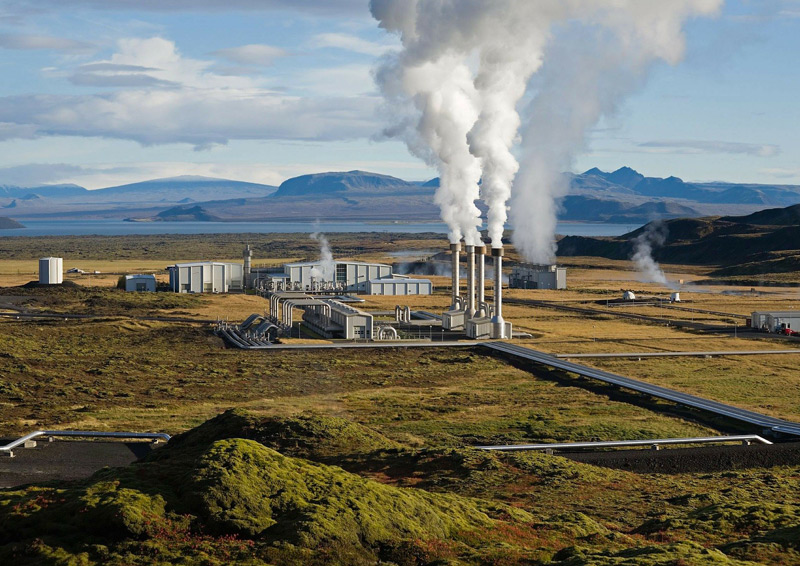A co-editor of Geothermal Energy, Heat Exchange Systems and Energy Piles (ICE Themes) explains how to tackle ground engineering and reduce carbon emissions.

- Updated: 10 May 2021
- Author: William Craig, Visiting Academic, University of Manchester
Some options for our future energy provision
Today the Earth’s population grows apace, with little sign that any peak or even equilibrium will be reached soon. As this continues the mean per capita consumption of energy keeps rising. Amid the twin global concerns of a pandemic and serious changes in climatic conditions around the planet, there is an increasingly popular and professional recognition of the need to reduce both total and individual energy consumption. We also need to develop energy resources that are more sustainable, less polluting, and less draining of limited reserve physical assets.
There are many routes to attaining these goals and obtaining energy from the ground without the need for hydrocarbon extraction is one attractive option on the way to a ‘Net Zero’ carbon economy. Other elements of the new greener economies, such as the direct or indirect use of solar energy, photovoltaics, wind, tidal or wave resources, nuclear and hydrogen power, will run in parallel.
Geothermal Energy, Heat Exchange Systems and Energy Piles
This resource on geothermal research brings together aspects of specifically ground-based technologies involving direct energy abstraction from (and occasionally dissipation to) the soils and rocks at varying depths beneath our feet. Often ‘out-of-sight' means ‘out-of-mind'. These techniques are not widely known, understood, or practiced by engineers and generally bypass the lay population. Geothermal Energy, Heat Exchange Systems and Energy Piles (ICE Themes) deals with geothermal energy, heat exchange, and, most specifically, energy piles.
Some of the ideas may appear a little whacky at first sight. Not all will necessarily succeed as main developments in the longer term, and not all the benefits and downsides of any will be immediately apparent. One chapter addresses some of the consequences of the regional exploitation of New Zealand’s geothermal potential over a lengthy period, though few would dispute the overall value of this technology when conditions are appropriate. Let’s take a look at some examples:
- Large temperature differences can be exploited by pumping hot ground fluid directly from soils and rocks without recharge. However, such abstraction can lead to some settlement at the surface, as has happened elsewhere in other contexts — for example, at some hydrocarbon extraction sites offshore and beneath Venice due to water supply pumping. Care must be taken to mitigate these consequences.
- There are plans in several countries to extract lower-grade heat from mine drainage systems where fluids flow relatively easily within former mineral extraction passages. Although not discussed here this technique can in the future be an opportunity to gain some advantage by reusing our mining heritage at limited localities.
- Other chapters deal with the possibility of gaining energy from the walls of metro tunnels and from road pavements, generally involving closed circulating fluid systems and/or recharge.
- Relatively low-temperature differences within the ground can be exploited by a range of heat exchange technologies and the terms ‘ground source heat pump’ and ‘energy pile’ are becoming more widely recognised if not necessarily understood. Each can be developed to provide a limited but regular supply of energy for local use, usually within an urban location, and applied to new constructions. Abstraction from significant infrastructure projects, such as tunnels, roads, airfield pavements is more novel and less well developed.
Wind Turbine Foundations
Another title, Wind Turbine Foundations (ICE Themes), is devoted to the single topic of wind turbine foundations. These structures are highly visible at a range of scales on land around the world and at increasingly large sizes in coastal and offshore locations. The concept of the wind farm is straightforward and accessible to engineers and laymen alike. The technicalities of the turbine foundations remain the domain of the specialist on a site-specific basis, exploring geotechnical aspects of this well-recognised and well-developed exploitation of renewable energy technology.
Open your eyes and keep an open mind
Geothermal Energy, Heat Exchange Systems and Energy Piles (ICE Themes) is intended as an eye-opener, to raise awareness of possibilities which have to date been limited mainly by conservatism and some reluctance to embrace new procedures. The lead authors of the thirteen chapters hail from the around the world. Their visions beyond the accepted horizons open up interesting and worthwhile future alternatives, for powering societies in all areas of our world, to those that have dominated for two hundred years and contribute in no small way to present crises. The greatest benefits of these ideas will arise when utilities and developers can be brought on-board early in major projects – retrofitting is likely to be significantly less economically attractive.
There will be other new ideas in the years ahead and some that have previously failed to progress to the mainstream may yet reappear – OTEC and the hot dry rock projects spring to mind. Much that is underground may be unseen and thought unglamourous, but new ideas and technologies must be the way forward. This is the sharp end of today’s geotechnical engineering and contributes in no small way to the wider discipline of geo-engineering.
Want to learn more about ICE Themes?
Books in the ICE Themes series showcase cutting edge research and practical guidance in civil engineering for researchers and students. Curated by experts, each title focuses on a key challenge within civil engineering research and practice. They bring together in one volume high impact research articles published by ICE Publishing from leading researchers and practitioners in the fi eld with a thorough index and introductory explanation, giving a full overview of the topic in one place.
Are you planning to write a book? Find out more about becoming an ICE Publishing author.
